I’m standing in my living room, barefoot, feeling the smooth, warm grain of my Mullican hardwood floors beneath my toes. It’s been a year since I installed them, and I can’t stop raving about how they’ve transformed my home.
If you’re hunting for flooring that blends beauty, durability, and eco-conscious craftsmanship, Mullican is a name you need to know.
This isn’t just about slapping some wood on your floors—it’s about elevating your space with a product that feels personal, timeless, and built to last. Trust me, you’ll want to bring Mullican into your home.
My Journey With Mullican Hardwood Flooring

When I decided to renovate my home, I was overwhelmed by the sheer number of flooring options. Tile? Laminate? Hardwood? I knew I wanted something that screamed warmth and authenticity, so I zeroed in on hardwood.
After weeks of research, I stumbled across Mullican Hardwood Flooring, a brand that kept popping up for its American-made quality and sustainable practices. I was intrigued, but also skeptical—could it live up to the hype?
I visited a local showroom to see Mullican’s offerings in person. The moment I laid eyes on their Castillian Collection, with its wirebrushed European White Oak, I was hooked. The planks had this rustic, handcrafted vibe that felt like they belonged in a cozy countryside cottage, yet they were sleek enough for my modern home.
I chose the 6.5-inch wide North Shore planks in a warm, natural tone. The salesperson walked me through the installation process, assuring me that Mullican’s engineered floors were versatile enough for my concrete subfloor—a huge plus since I wasn’t keen on ripping up my foundation.
Installation was a breeze, thanks to the click-lock system on some of Mullican’s engineered planks. My contractor was impressed with the precision milling, which made the job faster and cleaner. Once the floors were down, my home felt like it had a new soul.
The texture of the wirebrushed finish added depth, and the wide planks made my small living room feel grander. I’ve got two kids and a dog, so I was nervous about scratches, but these floors have held up like champs.
Sure, there’s a tiny dent from when my son dropped a toy truck, but it adds character, right? Every time I walk across these floors, I feel like I made the right call. They’re not just flooring—they’re a statement.
The Pros of Mullican Hardwood Flooring
- Stunning Variety of Styles and Species
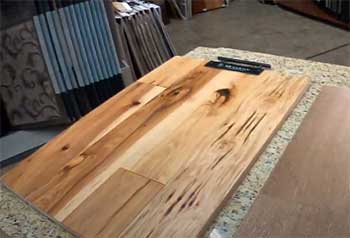
One thing I love about Mullican is the sheer variety.
Whether you’re into the classic look of oak or craving something exotic like Brazilian Cherry or Tigerwood, they’ve got you covered.
I was blown away by their collections—over 20 of them!
From the rustic charm of the Knob Creek Hand Sculpted to the modern elegance of the Astoria Collection, there’s something for every vibe.
I went with the Castillian for its wirebrushed texture, but I could’ve easily picked the Dumont for its low-gloss, traditional oak look. You can choose plank widths from 2.25 inches to a whopping 9.45 inches, which lets you customize the scale of your space. It’s like picking the perfect outfit for your home.
- American-Made Quality
As someone who values supporting local businesses, I was thrilled to learn Mullican is 100% made in the USA. Sourced from the Appalachian Mountains, their wood is precision-milled in plants across Tennessee, Virginia, and beyond.
There’s something reassuring about knowing my floors were crafted by skilled workers who take pride in their work. The quality shows—my floors have a consistent grain and finish that feels premium.
Plus, Mullican’s commitment to sustainability, like planting two trees for every one harvested, makes me feel good about my choice. It’s not just about aesthetics; it’s about investing in a product with integrity.
- Durability That Stands the Test of Time
Let’s talk toughness. My Mullican floors have endured a year of chaos—spilled juice, muddy paws, and my kids’ endless energy. The engineered planks I chose have a multi-layer plywood core that makes them super stable, even with humidity changes in my area.
Unlike solid hardwood, which can warp in damp conditions, my engineered floors laugh off moisture. The lifetime finish warranty on my Castillian planks gives me peace of mind, too. I’ve even sanded a small scratch out without a hitch, thanks to the NWFA-certified refinishable wear layer.
These floors are built to handle life.
- Eco-Friendly and Health-Conscious
If you’re like me and worry about indoor air quality, Mullican’s got your back. Their floors are FloorScore certified, meaning they meet strict standards for low emissions. No nasty chemicals here! I have allergies, so knowing my floors aren’t kicking up dust or mold is a big win.
Mullican’s Responsible Procurement Program ensures their wood comes from sustainable sources, which is a huge plus for eco-conscious folks. I feel like I’m doing my part for the planet while enjoying a gorgeous floor. It’s a win-win.
- Versatile Installation Options
I was nervous about installation, but Mullican made it painless. Their engineered floors can be glued, nailed, or floated, which gave my contractor flexibility. The click-lock system on some planks is a game-changer for DIYers—snap them together, and you’re done.
Even their solid hardwood options, while trickier to install over concrete, come with clear instructions. My installer raved about the micro-beveled edges, which made the seams tight and seamless.
Whether you’re a pro or a weekend warrior, Mullican’s versatility makes the process smoother than you’d expect.
The Not-So-Good Parts of Mullican Hardwood Flooring
- Quality Control Hiccups
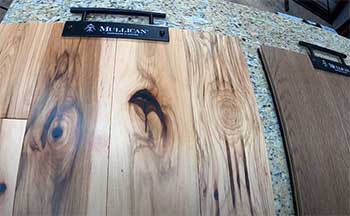
I’ll be honest—Mullican isn’t perfect.
While my floors turned out great, I’ve heard grumbles from others about inconsistent quality.
Some folks have reported cracks, splinters, or finish issues, like peeling or flaking, especially with engineered planks.
One friend of mine found knots with dark filler in her Castillian boards that clashed with her aesthetic. I didn’t have these issues, but it seems like Mullican’s quality control can be hit-or-miss. Ordering extra material (about 10-15% more) is a smart move to account for any defective boards.
- Limited Availability
Unlike big-box brands, Mullican isn’t always easy to find. They’re mostly sold through specialty showrooms, which can be a hassle if you don’t have one nearby. I had to drive an hour to see their samples in person, and online options are limited unless you go through specific retailers like Panel Town & Floors.
This exclusivity can feel like a barrier, especially if you’re on a tight timeline. I wish Mullican was as accessible as brands like Bruce, which you can grab at Home Depot.
- Higher Price Tag
Let’s talk money. Mullican isn’t cheap. My Castillian floors set me back about $6 per square foot, and some exotic species can climb to $8 or more. While the quality justifies the cost, it’s pricier than budget brands like Bruce or even Somerset.
If you’re on a tight budget, Mullican might stretch your wallet more than you’d like. That said, I see it as an investment—my home’s resale value got a boost, and the durability means I won’t be replacing these floors anytime soon.
- Square Edge Milling Concerns
Mullican’s solid hardwood uses a square edge milling format, which I didn’t choose but heard about from my contractor. Unlike micro-beveled edges, square edges can sometimes result in uneven boards, where one edge sits higher than another.
This can be a pain during installation and might bug perfectionists like me. Most brands use micro-bevels to avoid this, so it’s a quirky choice by Mullican. If you’re going for solid hardwood, double-check with your installer to ensure a smooth finish.
- Warranty Woes
Mullican offers solid warranties—lifetime structural for engineered floors and up to 50 years for finishes. But I’ve read horror stories about their customer service dropping the ball. Some folks say Mullican blames issues on improper installation or maintenance, even when the problem seems like a manufacturing defect.
I haven’t had to test their warranty myself (fingers crossed), but it’s worth noting that getting support might require some persistence. Keep your receipts and document everything during installation to avoid headaches.
Maintenance Tips For Mullican Hardwood Flooring
- Regular Dusting and Vacuuming
Keeping my Mullican floors looking pristine is easier than I expected. I vacuum weekly using a hard-floor setting to suck up dust and pet hair. Sweeping isn’t ideal—it can push dirt into the grain.
I use a microfiber dust mop for quick touch-ups between vacuums. It’s amazing how a five-minute sweep (well, mop) keeps the floors gleaming. If you’ve got kids or pets, this routine is a lifesaver for preventing scratches from trapped debris.
- Tackling Spills Immediately
Spills happen—trust me, my kids are pros at dropping juice. The key is to wipe them up ASAP with a damp, well-wrung cloth. Mullican’s engineered floors are more moisture-resistant than solid hardwood, but standing water is still a no-no.
I keep a stack of microfiber cloths in the kitchen for quick cleanups. Avoid soaps or harsh cleaners; they can dull the finish. If you’re dealing with sticky messes, a tiny bit of water goes a long way.
- Deep Cleaning with Approved Products
Every month, I give my floors a deep clean using Bona Hardwood Floor Cleaner, which Mullican recommends. It’s gentle but cuts through grime like nobody’s business. I spray a small section, wipe with a microfiber mop, and move on.
No buckets of water—just a light mist. This keeps the finish intact and the floors looking brand-new. If you’re tempted to use a steam mop, don’t. Steam can ruin the finish, and Mullican’s warranty won’t cover it.
- Protecting Against Scratches
My dog’s nails were my biggest worry, but I’ve kept scratches at bay with a few tricks. I trim his nails regularly and put felt pads under furniture legs. For high-traffic areas, I use washable rugs to take the brunt of the wear.
If you’re a heels-wearer, be cautious—some reviews mention punctures from stilettos. I also avoid dragging heavy items across the floor; a dolly or moving blankets work wonders. These small habits make a big difference.
- Managing Humidity Levels
Mullican’s engineered floors are stable, but humidity can still mess with hardwood. I live in a humid area, so I use a dehumidifier in summer to keep levels between 35-55%. In winter, a humidifier prevents the wood from drying out.
My floors haven’t cupped or warped, which I credit to this routine. Check your home’s humidity with a cheap hygrometer—it’s a small investment for long-term floor health.
Comparing Mullican To Other Hardwood Flooring Brands
When you’re in the market for hardwood, it’s easy to get overwhelmed by the sheer number of brands. You see names on display, you read things online, but how do they really compare?
Instead of a technical breakdown, let’s talk about how Mullican feels next to some of the other big names you’re likely to encounter.
- Mullican Vs. Bruce
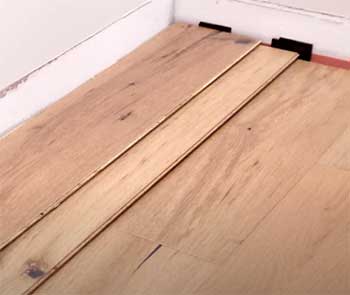
You’ve almost certainly heard of Bruce Hardwood Flooring.
It’s one of the most widely available brands, found in nearly every major home improvement store. Think of Bruce as the popular, accessible choice.
They offer a wide range of products, often at a very attractive price point, which makes them a go-to for many homeowners and builders on a budget.
So, where does Mullican fit in?
If Bruce is the dependable sedan, Mullican is the luxury touring car. While both will get you where you need to go, the experience and quality are worlds apart. The primary difference comes down to sourcing and manufacturing.
Much of Bruce’s flooring is produced overseas, whereas Mullican is proudly made entirely in the USA from Appalachian hardwoods. This difference manifests in the final product. When you compare a box of Mullican to a box of a comparable Bruce product, you’ll often find that the Mullican boards have more consistent color, fewer short pieces, and more precise milling.
This means a cleaner installation and a more uniform, high-end look. Bruce is a solid choice for a budget-conscious project or a rental property, but if you’re looking for a “forever floor” for your own home and prioritize American craftsmanship and superior material quality, you’ll feel the difference with Mullican.
- Mullican Vs. Shaw
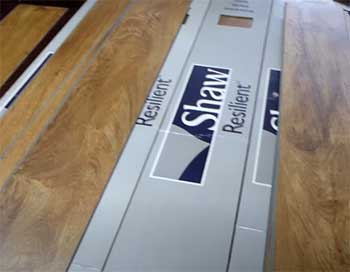
Shaw Floors is another giant in the industry.
They are a flooring empire, producing everything from carpet and vinyl to laminate and, of course, hardwood.
Their strength is their immense variety and massive distribution network.
They are a trend-focused company, often quick to market with the latest colors and styles.
The comparison with Mullican is one of a specialist versus a generalist. Shaw does everything, but Mullican does hardwood, and they do it with an artisan’s focus. While Shaw offers some excellent hardwood products, their business is spread across many different flooring types.
Mullican’s entire identity, from forestry to finishing, is centered around creating the best possible hardwood floor. This specialization often translates into features that flooring aficionados appreciate, like Mullican’s proprietary Alpha A’Lumina finish or their strict control over the entire process, from tree to finished plank.
If you want a one-stop-shop where you can match your hardwood to your carpet and tile all from one brand, Shaw is a fantastic resource. But if you believe that specialization breeds excellence and you want a floor from a company that lives and breathes real hardwood, Mullican’s focused expertise is incredibly compelling.
- Mullican Vs. Somerset
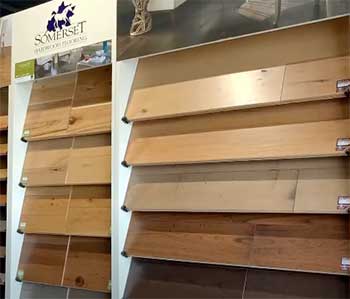
This is perhaps the most interesting comparison, as Somerset is another highly respected brand that specializes in American-made hardwood flooring, also sourced from the Appalachian region.
Both companies are known for their quality, sustainability, and craftsmanship.
They are true peers and competitors in the premium hardwood space.
So how do you choose between them?
The differences are more nuanced and often come down to personal preference in style and finish. Both brands offer exceptional quality. However, you might find that Mullican offers a slightly broader range of styles, especially in their textured and hand-scraped collections.
For example, Mullican’s extensive engineered lines, like the San Marco or Castillian collections, offer some unique visual appeals that might differentiate them from Somerset’s offerings. The “feel” of the finish can also be a deciding factor.
Some people might prefer the clarity and durability of Mullican’s Alpha A’Lumina finish, while others may gravitate towards Somerset’s Ultimate™ UV-Cured Aluminum Oxide/Urethane finish. The best way to decide between these two excellent brands is to get physical samples.
See them in your home, under your lighting. Walk on them, touch them. With two brands of this caliber, the “better” choice is often the one that simply speaks to you more.
Frequently Asked Questions (FAQ)
From my experience, Mullican’s quality is impressive, especially their engineered floors. The multi-layer construction and sustainable sourcing from the Appalachian Mountains make them durable and stable. However, some users report issues like cracks or finish defects, so inspecting your order is key. Their lifetime warranties show confidence, but quality control can vary. Overall, I’d say they’re a solid choice for premium hardwood.
Mullican Flooring is made by Mullican Hardwood Flooring, a company founded in 1985 in Johnson City, Tennessee. They’re an American brand, crafting solid and engineered hardwood in plants across Tennessee, Virginia, and other Appalachian states. Their focus on sustainability and local labor sets them apart.
It depends on your needs! I love Mullican for its style and eco-friendliness, but Bruce is great for budget-conscious folks, Somerset excels in high-grade oak, and DuChateau is the luxury king. For a mix of quality, variety, and value, Mullican’s my pick, but your priorities (cost, style, durability) should guide you.
Joanna Gaines often uses Magnolia Home flooring, a line she developed with Profile by Karndean. It’s mostly luxury vinyl plank (LVP) designed to mimic hardwood, offering durability and water resistance. While she hasn’t specifically endorsed Mullican, her aesthetic aligns with their rustic, wirebrushed styles like the Castillian Collection I chose.
Why Mullican Hardwood Flooring Is Worth It?
After a year with Mullican, I’m still in love. The warmth, durability, and eco-friendly vibe make my home feel like a sanctuary. Sure, there are minor drawbacks—price and availability—but the pros outweigh them.
If you want floors that tell a story, last for decades, and make your space feel uniquely yours, Mullican is the way to go. Step onto these floors, and you’ll get why I’m obsessed. Make the leap—you won’t regret it.
